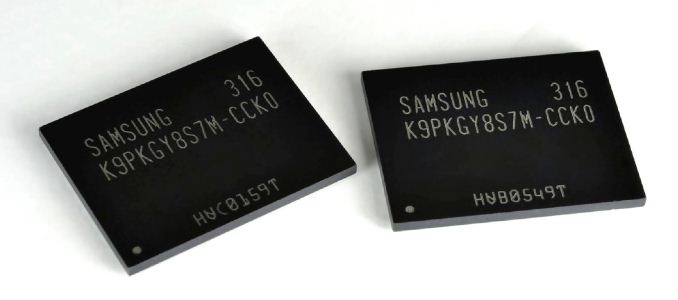Samsung Introduces The First eMMC 5.1 Based Flash Memory
by Brandon Chester on February 17, 2015 4:16 PM EST
Today Samsung revealed what they claim are the first flash memory chips based on the eMMC 5.1 standard which was just approved by JEDEC, the group that oversees the development of many semiconductor industry standards. eMMC is an embedded version of the MultiMediaCard standard that was once popular among digital cameras and PDAs. It allows for the NAND and controller in a device to be put into a small package on the logic board, which is a necessity when working with small mobile devices. Essentially every smartphone and tablet on the market today uses the eMMC standard as its storage solution.
As mobile devices have become more complex. there has been a need for improved NAND performance. Streaming and recording higher resolution content requires faster speeds for reading and writing, and so the evolution of the eMMC standard has been accompanied by improvements in performance at each step. When Samsung introduced their first eMMC 5.0 flash memory in 2013, their 64GB chips were rated for maximum sequential reads and writes of 250MB/s and 90MB/s respectively. Samsung's eMMC 5.1 memory increases the maximum write performance to 125MB/s. Similarly, random read performance increases from 7,000 IOPS to 11,000 IOPS and random write performance increases from 7,000 IOPS to 13,000 IOPS.
eMMC 5.1 based memory also has new features that will enable further improved performance. The feature that Samsung is specifically making note of is command queuing. True to its name, command queuing provides an interface for queuing up commands to be executed. This has been a feature of storage solutions in the PC world for some time, but previous eMMC controller implementations would submit commands and wait for completion before sending the next command.
Source: Samsung Semiconductor










42 Comments
View All Comments
jeffkibuule - Tuesday, February 17, 2015 - link
Those write speeds look really great, but without USB 3.0 which almost no phones actually support, it seems like a real waste.Are most smartphone OEMs waiting for USB Type-C connectors to roll out USB 3.x support because the micro USB 3.0 connector looks so kludgy?
willis936 - Tuesday, February 17, 2015 - link
Lessening the chugginess on mobile devices hardly seems "like a real waste".Mikemk - Tuesday, February 17, 2015 - link
I fail to see why you need USB 3 for the internal drive.SleepyFE - Tuesday, February 17, 2015 - link
To copy/paste from/to PC.wolrah - Tuesday, February 17, 2015 - link
That's not why the speed matters. The local apps using the storage and it not being fast enough is why it matters. A speed increase in transfers from your PC is just a side benefit.SleepyFE - Wednesday, February 18, 2015 - link
He asked why you need USB 3. I answered.cygnus1 - Tuesday, February 17, 2015 - link
There are important uses for more storage performance that have nothing to do with moving data on and off the phone through a USB port: keeping up with a decent 802.11ac connection for downloading music or video or other files; and being able to record from onboard cameras and other sensors faster allows for higher resolution, frame rates, etcSleepyFE - Tuesday, February 17, 2015 - link
I call bullshit. Any flash solution is faster than an HDD. A PC with an HDD will handle everything you said just fine.mkozakewich - Wednesday, February 18, 2015 - link
I get the feeling most PCs do a lot of caching to RAM.Also, most PCs don't record 4K video.
SleepyFE - Wednesday, February 18, 2015 - link
Phones have RAM as well, maybe they should just put more RAM in phones. Problem solved. And most phones also don't record 4K video.